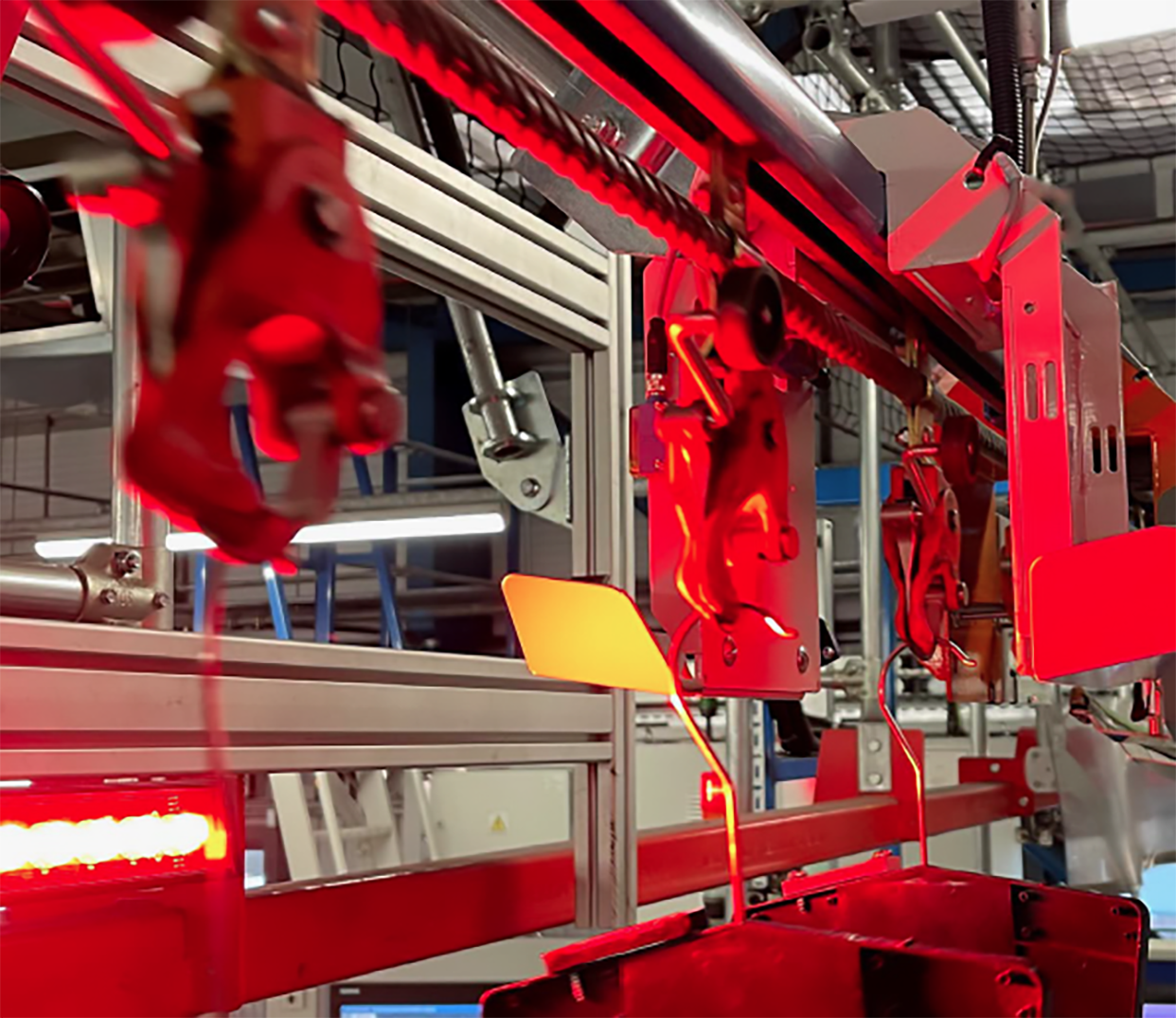AMH Material Handling specialises in the design, installation and integration of automated conveyor and sortation systems for some of the UK’s largest retailers. Since its formation in 2015, the company has quickly become the ‘go-to’ provider for profitable ecommerce and warehouse automation solutions.
Bytronic & AMH partnership
It has particular expertise in garment on hanger (GOH) conveyor lines, and it was in connection with this that its engineering team approached Bytronic. AMH wanted to develop a partnership that would help create a new and specialist solution for a major off-price fashion retailer.
The challenge was to create an automated ‘vision-based’ inspection system for the fashion retailer’s GOH conveyors. These conveyors transport up to 140 hanging garments per minute and to work effectively, the solution would have to capture data and process it within milliseconds.

Tackling shrinkage with automated machine vision inspection
The GOH conveyors developed by AMH Material Handling process millions of garments every year. Overhead GOH conveyors can be designed to transport either single units for sortation or ratio packs and batches for transportation and storage.
Transporting hanging garment ratio packs or batches using GOH conveyors requires separation into single units for accurate sortation. The high-speed separation process can often result in the accidental doubling up of hangers which can often be missed by older item detection technologies.
Over time, the doubling up of hangers can result in stock management issues as the stock information for dispatched items will be incorrect when compared against the stock received at the final destination. For major retailers, this can be a huge problem. To address it, full-time operators were placed on the lines to spot double hanger issues
- a costly and labour-intensive fix.
When AMH began developing its bespoke automated solution in 2015, it contacted the manufacturer Cognex and its partner network to supply the machine vision expertise. As one of Cognex’s only UK Platinum Partners, Bytronic was recommended to develop and install the vision solution.
Image capture and data processing within milliseconds
he result is AMH’s vision detection system which identifies double hangers as they pass along the automated single unit sortation line. This solution prevents stock losses without the need for manual checks.
The system combines AMH’s mechanical and electrical installation supported by programmable logic controllers (PLC), Cognex’s cameras and Bytronic’s lighting and vision software programming. The line is able to count each carrier, identify its unique number, track its location, check it is secure and not broken, and identify any double hangers, accepting or rejecting the carrier accordingly.
Bytronic installed and programmed the camera software to capture an image of each carrier when triggered by the line. The camera is detecting several key features including the condition of the carrier and its individual parts to ensure they are maintained and serviced when required to prolong the lifespan of the system.
The image is captured, data processed and an ‘accept’ or ‘reject’ message is sent back to the control system, all within milliseconds. If a doubled hanger or damaged carrier is detected, the ‘reject’ message activates a reject divert, sending the items to a separate defect lane for further inspection.
Managed by AMH, the project was delivered in partnership, with the data captured by Bytronic’s camera and the lighting system being processed by the PLC controls and software solution provided by AMH. The inspection system was calibrated and tested offline before installation, as all factory acceptance testing (FAT) could be done off-site.
"We approached Bytronic to help deliver this AMH Material Handling-led solution with us for one of our largest customers. We worked closely together to identify what data the system needed to generate, and how we needed it presenting. From our conversations with Cognex we realised the success of this project would be in the installation of the lighting and vision software, and that’s why we chose Bytronic."
Barry Pemberton Solutions Director, AMH Material Handling
Return on investment delivered inside 12 months with added maintenance benefits
Once operational, the savings were immediate. The upgrade has delivered a return on investment in under a year, through significantly reducing operator costs. This meant the ‘inspection’ operators, who were previously on shift 24/6, could now be deployed elsewhere. In addition, the new overhead system has supported a reduction in stock losses by improving both the stock accuracy and inventory being distributed to stores nationwide.
Whilst the project’s primary focus was to detect double hangers, it has delivered a further benefit in identifying possible maintenance issues. The solution now identifies and stores statistics on carrier damage - ready for maintenance engineers to fix and update the system. By removing doubled or damaged hangers from service, it also reduces the risk of tangled hangers and unnecessary downtime due to re-occurring damage.

